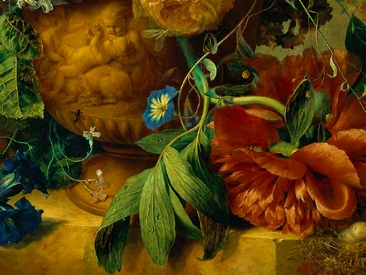


|

| ||
| teem | / | bin |
ilk |
This page gives a summary of the various capabilities of ilk. Everytime that an image is preceeded by some text in mono-spaced font, that text can be pasted into a shell in order to regenerate the image. This assumes that ilk, unu, and cjpeg are all in your path, or are aliased.
ilk: (I)mage (L)inear Trans(X-->K)forms. Applies linear (homogenous
coordinate) transforms to a given image, using the given kernel for resampling.
Usage: ilk [@file ...] [-i <image>] [-0 <origin>] -t <xform0 ...> \
[-k <kernel>] [-min <xMin yMin>] [-max <xMax yMax>] [-b <boundary>] \
[-bg <bg0 bg1 ...>] [-s <xSize ySize>] [-o <filename>]
@file ... = response file(s) containing command-line arguments
-i <image> = input image; default: "-"
-0 <origin> = where to location (0,0) prior to applying transforms.
o "u:<float>,<float>" locate origin in a unit box
[0,1]x[0,1] which covers the original image
o "p:<float>,<float>" locate origin at a particular
pixel location, in the index space of the image
default: "p:0,0"
-t <xform0 ...> = transform(s) to apply to image. Transforms are applied in
the order in which they appear.
o "identity": no geometric transform, just resampling
o "translate:x,y": shift image by vector (x,y), as
measured in pixels
o "rotate:ang": rotate CCW by ang degrees
o "scale:xs,ys": scale by xs in X, and ys in Y
o "shear:fix,amnt": shear by amnt, keeping fixed the
pixels along a direction <ang> degrees from the X axis
o "flip:ang": flip along axis an angle <ang> degrees
from the X axis
o "a,b,c,d,tx,ty": specify the transform explicitly
(1 or more 2D transforms)
-k <kernel> = reconstruction kernel; default: "cubic:0,0.5"
-min <xMin yMin> = lower bounding corner of output image. Default (by not
using this option) is the lower corner of input image.
(2 doubles)
-max <xMax yMax> = upper bounding corner of output image. Default (by not
using this option) is the upper corner of input image.
(2 doubles)
-b <boundary> = what to do when sampling outside original image.
o "bleed": copy values at image border outward
o "wrap": do wrap-around on image locations
o "pad": use a given background value (via "-bg")
default: "bleed"
-bg <bg0 bg1 ...> = background color to use with boundary behavior "pad".
Defaults to all zeroes. (1 or more floats)
-s <xSize ySize> = For each axis, information about how many samples in
output:
o "x<float>": number of output samples is some scaling
of the number input samples; multiplied by <float>
o "<int>": specify exact number of samples
(2 sampling specifications)
default: "x1 x1"
-o <filename> = file to write output nrrd to (string); default: "-"
Options which will be used verbatim many times may be entered into a "response file"; when these are indicated on the command line with "@filename", the contents of the file are effectively inserted there on the command line. Within the response file, line breaks count as white space, and comments lines begin with "#".
unu resample -i huysumcrop.ppm -s = x0.6 x0.6 -o init.ppm cjpeg -quality 99 init.ppm > init.jpg

The output of ilk is a NRRD file, but it will have the same dimension and type as the input 8-bit color image, which means it can be converted to a PPM file (really just changing the header), and then saved as a JPEG, with the following sequence:
Because this will be used so often, I'll create an alias for it:... | unu save -f pnm | cjpeg -quality 99 out.jpg
HOWEVER, the thing to keep in mind as you read this page, is that ilk will happily process any 3D NRRD file; it will just take the number of samples along the fastest axis as the number of components/channels associated with each pixel. This means that ilk is good for operating on spectral image data, as well doing axis-aligned operations on 3D scalar fields.alias tojpg "unu save -f pnm | cjpeg -quality 99"
When describing angles, the units are always degrees, and "0" means parallel with the X axis, "90" means parallel with the Y axis, with angles increasing counter-clockwise.(0,0) -----------> X | | | v Y
There are two ways of specifying the origin to ilk: